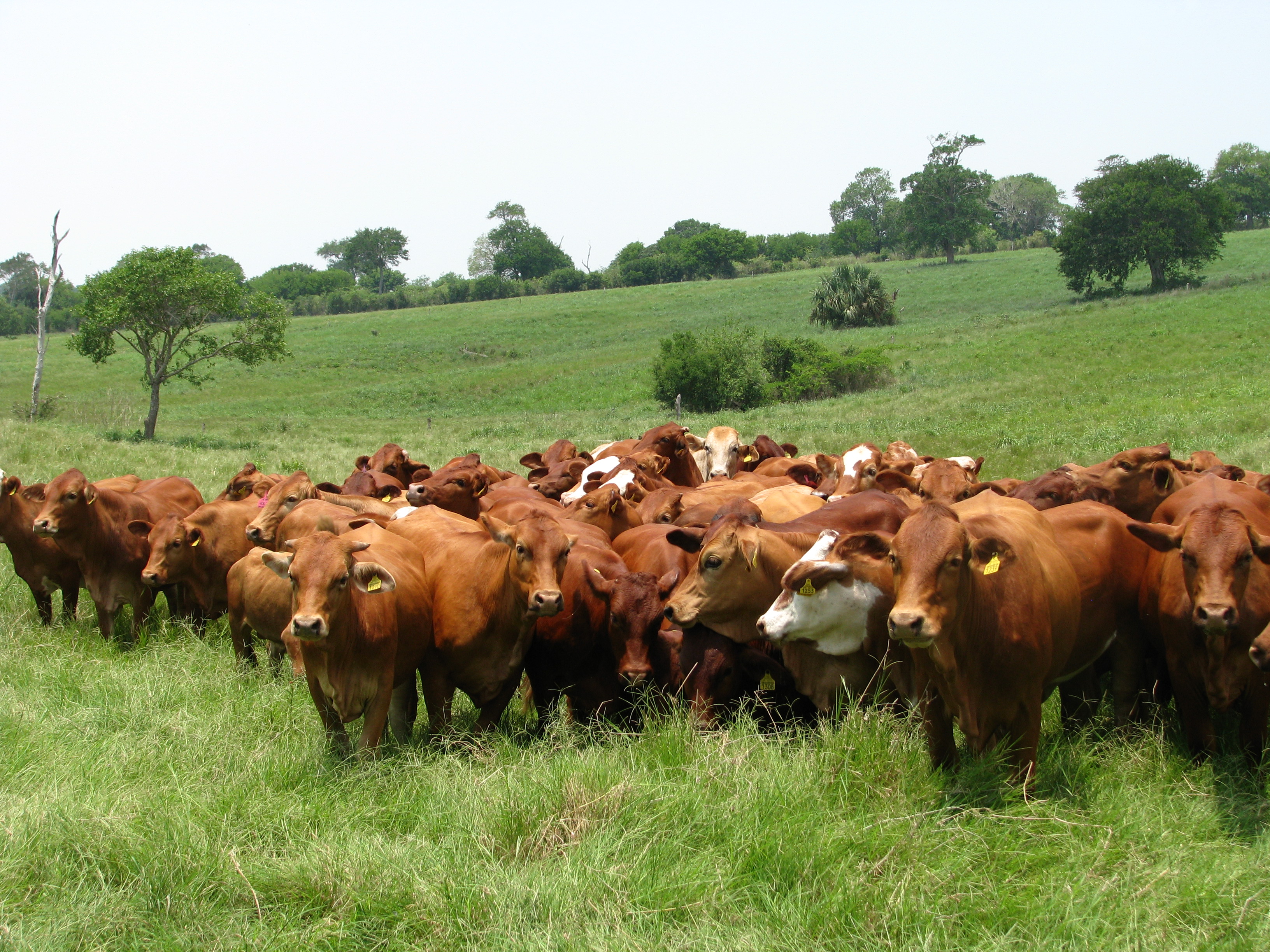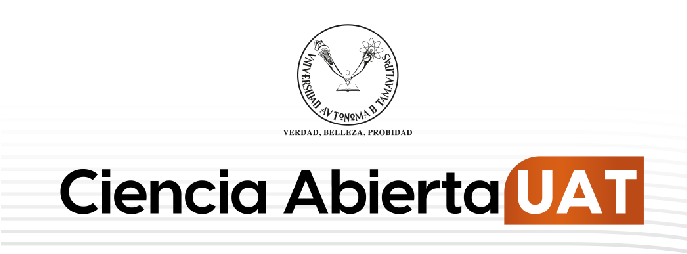Estrategias de nutrición y alimentación para reducir las emisiones de metano en rumiantes bajo sistemas pastoriles: Una revisión
DOI:
https://doi.org/10.29059/cvpa.v1i2.18Palabras clave:
metano, impacto ambiental, producción animal, agostaderosResumen
Los sistemas de producción de rumiantes en pastoreo mantienen un potencial de mitigación de gases de efecto invernadero (GEI), en especial el metano entérico (CH4). En sistemas intensivos de producción de leche bovina se estima una emisión de 1 kg de CO2eq kg de energía-leche corregida (ECM), comparada con > 7 kg de CO2eq kg de ECM en los sistemas extensivos. El objetivo de este artículo fue evaluar las estrategias usados para mitigar las emisiones de CH4 y destacar aquellas con potencial de implementación en los sistemas pastoriles, desde el punto de vista económico y sustentable. Las estrategias de alimentación y modificadores de la biota en el rumen pueden disminuir las emisiones en un rango de 14 a 50%, mientras que reducciones por manejo y selección de rumiantes van de 15 a 30%. La adopción de más de una estrategia en los sistemas pastoriles puede ayudar a mitigar las emisiones de CH4.
Citas
Abecia, L., Toral, P. G., Martín-García, A. I., Martínez, G., Tomkins, N. W., Molina-Alcaide, E., Newbold, C. J., & Yáñez-Ruiz, D. R. (2012). Effect of bromochloromethane on methane emission, rumen fermentation pattern, milk yield, and fatty acid profile in lactating dairy goats. Journal of Dairy Science, 95, 2027-2036. https://doi.org/10.3168/jds.2011-4831
Abreu, A., Carulla, J. E., Kreuzer, M., Lascano, C. E., Díaz, T. E., Cano, A., & Hess, H. D. (2003). Efecto del fruto, del pericarpio y del extracto semipurificado de saponinas de Sapindus saponaria sobre la fermentación ruminal y la metanogénesis in vitro en un sistema RUSITEC. Revista Colombiana de Ciencias Pecuarias, 16, 147-154. https://www.redalyc.org/articulo.oa?id=295026126006
Anderson, R. C., Huwe, J. K., Smith, D. J., Stanton, T. B., Krueger, N. A., Callaway, T. R., Edrington,T. S., Harvey, R. B., & Nisbet, D. J. (2010). Effect of nitroethane, dimethyl-2-nitroglutarateand 2-nitro-methyl-propionate on ruminal methane production and hydrogen balance in vitro. Bioresource Technology, 101, 5345-5349. https://doi.org/10.1016/j.biortech.2009.11.108
Appuhamy, J. A. D. R. N., Strathe, A. B., Jayasundara, S., Wagner-Riddle, C., Dijkstra, J., France,J., & Kebreab, E. (2013). Anti-methanogenic effects of monensin in dairy and beef cattle: A meta-analysis. Journal of Dairy Science, 96, 5161-5173. https://doi.org/10.3168/jds.2012-5923
Arthur, P. F., Renand, G., & Krauss, D. (2001). Genetic and phenotypic relationships among differentmeasures of growth and feed efficiency in young Charolais bulls. Livestock Production Science, 68, 131-139. https://doi.org/10.1016/S0301-6226(00)00243-8
Baudracco, J., López-Villalobos, N., Holmesa, C. W., & Macdonald, K. A. (2010). Effects of stockingrate, supplementation, genotype and their interactions on grazing dairy systems: a review. NewZealand Journal of Agricultural Research, 53, 109-133. https://doi.org/10.1080/00288231003777665
Benchaar, C., & Greathead, H. (2011). Essential oils and opportunities to mitigate enteric methane emissions from ruminants. Animal Feed Science and Technology, 166, 338-355. https://doi.org/10.1016/j.anifeedsci.2011.04.024
Brask, M., Lund, P., Weisbjerg, M. R., Hellwing, A. L. F., Poulsen, M., Larsen, M. K., & Hvelplund,T. (2013). Methane production and digestion of different physical forms of rapeseed asfat supplements in dairy cows. Journal of Dairy Science, 96, 2356-2365. https://doi.org/10.3168/jds.2011-5239
Brown, E. G., Anderson, R. C., Carstens, G. E., Gutierrez-Bañuelos, H., McReynolds, J. L., Slay, L. J., Callaway, T. R., & Nisbet, D. J. (2011). Effects of oral nitroethane administration on enteric methane emissions and ruminal fermentation in cattle. Animal Feed Science and Technology, 166(167), 275-281. https://doi.org/10.1016/j.anifeedsci.2011.04.017
COTECOCA. Comisión Técnico Consultiva para la determinación de Coeficientes de Agostadero (1967). Metodología para determinar tipos vegetativos, sitios y productividad de sitios.Secretaría de Agricultura y Recursos HidráulicosPublicación No. 8, México, D.F. 84 p.
Capper, J. L., Cady, R. A., & Bauman, D. E. (2009). The environmental impact of dairy production: 1944 compared with 2007. Journal of Animal Science, 87, 2160-2167. https://doi.org/10.2527/jas.2009-1781
Carmona-Flores, L., Bionaz, M., Downing, T., Sahin, M., Cheng, L., & Ates, S. (2020). Milkproduction, N partitioning, and methane emissions in dairy cows grazing mixed or spatially separated simple and diverse pastures. Animals, 10(8), 1301. https://doi.org/10.3390/ani10081301
Clark, H. (2013). Nutritional and host effects on methanogenesis in the grazing ruminant. Animal,7, 41-48. https://doi.org/10.1017/S1751731112001875
Crosson, P., Shalloo, L., O’Brien, D., Lanigan, G. J., Foley, P. A., Boland, T. M., & Kenny, D. A. (2011). A review of whole farm systems models of greenhouse gas emissions from beef anddairy cattle production systems. Animal Feed Science and Technology, 166-167, 29-45. https://doi.org/10.1016/j.anifeedsci.2011.04.001
Chung Y. H., He, M. L., McGinn, S. M., McAllister, T. A., & Beauchemin, K. A. (2011). Linseed suppresses enteric methane emissions from cattle fed barley silage, but not from those fedgrass hay. Animal Feed Science and Technology, 166-167, 321-329. https://doi.org/10.1016/j.anifeedsci.2011.04.022
Chuntrakort, P., Otsuka, M., Hayashi, K., Takenaka, A., Udchachon, S., & Sommart, K. (2014).The effect of dietary coconut kernels, whole cottonseeds and sunflower seeds on the intake, digestibility and enteric methane emissions of Zebu beef cattle fed rice straw based diets. Livestock Science, 161, 80-89. https://doi.org/10.1016/j.livsci.2014.01.003
DEFRA (Ministerio del Medio Ambiente, la Alimentación y los Asuntos Rurales del Reino Unido). (2010). Ruminant nutrition regimes to reduce methane and nitrogen emissions. Project AC0209 Report. DEFRA. http://randd.defra.gov.uk/Default.aspx?Menu=Menu&Module=More&Location=None&Completed=0&ProjectID=14952
Delgado, D. C., González, R., Galindo, J., Cairo, J., & Almeida, M. (2007). Potencialidad de Trichantera gigantea y Morus alba para reducir la producción ruminal de metano in vitro. Revista Cubana de Ciencia Agrícola, 41, 339-342. http://www.redalyc.org/articulo.oa?id=193017712007
De Haas, Y., Veerkamp, R. F., De Jong, G., & Aldridge, M. N. (2021). Selective breeding as a mitigationtool for methane emissions from dairy cattle. Animal, 15, 100294. https://doi.org/10.1016/j.animal.2021.100294
Díaz Puentes, L. N. (2009). Interacciones moleculares entre plantas y microorganismos: saponinas como defensas químicas de las plantas y su tolerancia a los microorganismos. Una revisión. RET. Revista de Estudios Transdisciplinarios, 1(2), 32-55. https://www.redalyc.org/pdf/1792/Resumenes/Resumen_179214945004_1.pdf
Dini, Y., Cajarville, C., Gere, J. I., Fernandez, S., Fraga, M., Pravia, M. I., Navajas, E. A., & Ciganda,V. S. (2019). Association between residual feed intake and enteric methane emissions in Hereford steers. Translational Animal Science, 3(1), 239-246. https://doi.org/10.1093/tas/txy111
Foley, P. A., Kenny, D. A., Lovett, D. K., Callan, J. J., Boland, T. M., & O’Mara, F. P. (2009). Effect of dl-malic acid supplementation on feed intake, methane emissions, and performance of lactating dairy cows at pasture. Journal of Dairy Science, 92, 3258-3264. https://doi.org/10.3168/jds.2008-1633
Galindo, J., Delgado, D. C., Pedraza, R., & García, D. E. (2005). Impacto de los árboles, los arbustos y otras leguminosas en la ecología ruminal de animales que consumen dietas fibrosas. Pastosy Forrajes, 28, 59-68. http://www.redalyc.org/articulo.oa?id=269121628005
Galindo, J., González, N., Delgado, D., Sosa, A., Marrero, Y., González, R., Aldana, A. I., & Moreira,O. (2008). Efecto modulador de Leucaena leucocephala sobre la microbiota ruminal. Zootecnia Tropical, 26, 249-252.
Galindo, J., González, N., Sosa, A., Ruiz, T., Torres, V., Aldana, A. I., Díaz, H., Moreira, O., Sarduy, L., & Noda, A. C. (2011). Efecto de Tithonia diversifolia (Hemsl.) Gray (Botón de oro) en la población de protozoos y metanógenos ruminales en condiciones in vitro. Revista Cubana de Ciencia Agrícola, 45, 33-37. biblat.unam.mx/hevila/Revistacubanadecienciaagricola/2011/vol45/no1/8.pdf
Garg, M. R. (2012). Balanced feeding for improving livestock productivity-increase in milk production and nutrient use efficiency in methane emision (FAO Animal production and health paper No. 173). FAO. http://www.fao.org/docrep/016/i3014e/i3014e00.htm
Gerber, P. J., Steinfeld, H., Henderson, B., Mottet, A., Opio, C., Dijkman, J., Falcucci, A., & Tempio,G. (2013). Tackling climate change through livestock- A global assessment of emissions and mitigation opportunities. FAO. http://www.fao.org/docrep/018/i3437e/i3437e00.htm
Goel, G., & Makkar, H. P. (2012). Methane mitigation from ruminants using tannins and saponins. Tropical Animal Health and Production, 44, 729-739. https://doi.org/10.1007/s11250-011-9966-2
Grainger, C., & Beachemin, K. A. (2011). Can enteric methane emissions from rumiants be lowered without lowering their production? Animal Feed Science and Technology, 166-167, 308-320. https://doi.org/10.1016/j.anifeedsci.2011.04.021
Herrera-Pérez, J., Hernández-González, D., Sánchez-Santillán, P., Torres-Salado, N., Ayala-Monter, M. A., Saavedra-Jiménez, L. A., & Rosales-Martínez, G. N. (2023). Características químicas y fermentativas in vitro de pastos tropicales a diferentes edades de rebrote. Agrociencia, 57(6), 1102-1125. https://doi.org/10.47163/agrociencia.v57i6.2738
Hess, H. D., Monsalve, L. M., Lascano, C. E., Carulla, J. E., Diaz, T. E., & Kreuzer, M. (2003). Supplementation of a tropical grass diet with forage legumes and Sapindus saponaria fruits:effects on in vitro ruminal nitrogen turnover and methanogenesis. Crop and Pasture Science, 54, 703-713. https://doi.org/10.1071/AR02241
Holenchek, J. L., Pieper, R. D., & Herbel, C. H. (1989). Range management, principles and practices.Prentice Hall.
Hristov, A. N., Oh, J., Lee, C., Meinen, R., Montes, F., Ott, T., Firkins, J., Rotz, A., Dell, C., Adesogan, A., Yang, W., Tricarico, J., Kebreab, E., Waghorn, G., Dijkstra, J., & Oosting, S. (2013). Mitigation of greenhouse gas emissions in livestock production- A review of technicaloptions for Non-CO2 emissions (FAO Animal production and Health paper No. 177), FAO. http://www.fao.org/docrep/018/i3288e/i3288e00.htm
Hristov, A. N., Oh, J., Giallongo, F., Frederick, T. W., Harper, M. T., Weeks, H. L., Branco, A. F., Moate, P. J., Deighton, M. H., Williams, S. R. O., Kindermann, M., & Duval, S. (2015). An inhibitor persistently decreased enteric methane emissions from dairy cows with no negativeeffect on milk production. Proceedings of the National Academy of Sciences, 112(34), 10663-10668. https://doi.org/10.1073/pnas.1504124112
IPCC. (2013). Climate change 2013: The physical basis. Contribution of working group I to the fifthassessment report of the intergovernmental panel on climate, Geneva, Switzerland. http://www.ipcc.ch/report/ar5/wg1/
Jahani-Azizabadi, H., Mesgaran, M. D., Vakili, A. R., Razayazdi, K., & Hashemi, M. (2011). Effectof various medicinal plant essential oils obtained from semi-arid climate on rumen fermentation characteristics of a high forage diet using in vitro batch culture. African Journal of. Microbiology Research, 5(27), 4812-4819. https://doi.org/10.5897/AJMR11.575
Jouany, J. P., & Morgavi, D. P. (2007). Use of ‘natural’ products as alternatives to antibiotic feed additivesin ruminant production. Animal, 1, 1443-1466. https://doi.org/10.1017/S1751731107000742
Kim, D. H., Mizinga, K. M., Kube, J. C., Friesen, K. G., McLeod, K. R., & Harmon, D. L. (2014). Influence of monensin and lauric acid distillate or palm oil on in vitro fermentation kinetics and metabolites produced using forage and high concentrate substrates. Animal Feed Scienceand Technology, 189, 19-29. https://doi.org/10.1016/j.anifeedsci.2013.12.010
Knapp, J. R., Laur, G. L., Vadas, P. A., Weiss, W. P., & Tricarico, J. M. (2014). Enteric methane in dairy cattle production: Quantifying the opportunities and impact of reducing emissions. Journal of Dairy Science, 97, 3231-3261. https://doi.org/10.3168/jds.2013-7234
Kobayashi, Y. (2010). Abatement of methane production from ruminants: trends in the maniplation of rumen fermentation. Asian-Aust. Journal of Animal Science, 23, 410-416. https://doi.org/10.5713/ajas.2010.r.01
Króliczewska, B., Pecka-Kiełb, E., & Bujok, J. (2023). Strategies used to reduce methane emissions from ruminants: Controversies and issues. Agriculture, 13(3), 602. https://doi.org/10.3390/agriculture13030602
Ku-Vera, J., Castelán-Ortega, O. A., Galindo-Maldonado, F. A., Arango, J., Chirinda, N., Jiménez-Ocampo,R., Valencia-Salazar, S. S., Flores-Santiago, E. J., Montoya-Flores, M. D., Molina-Botero, I. C., Piñeiro-Vázquez, A. T., Arceo-Castillo, J. I., Aguilar-Pérez, C. F., Ramírez-Avilés, L., & Solorio-Sánchez, F. J. (2020). Review: strategies for enteric methane mitigation in cattle fed tropical forages. Animal, 14(3), s453-s463. https://doi.org/10.1017/S1751731120001780
Lila, Z. A., Mohammed, N., Kanda, S., Kamada, T., & Itabashi, H. (2003). Effect of sarsaponinon ruminal fermentation with particular reference to methane production in vitro. Journal ofDairy Science, 86, 3330-3336. https://doi.org/10.3168/jds.S0022-0302(03)73935-6
Mao, H.-L., Wang, J. K., Zhou, Y. Y., & Liu, J. X. (2010). Effects of addition of tea saponins and soybean oil on methane production, fermentation and microbial population in the rumen ofgrowing lambs. Livestock Science, 129, 56-62. https://doi.org/10.1016/j.livsci.2009.12.011
Min, B. R., Lee, S., Jung, H., Miller, D. N., & Chen, R. (2022). Enteric methane emissions and animal performance in dairy and beef cattle production: Strategies, opportunities, and impactof reducing emissions. Animals, 12(8), 948. https://doi.org/10.3390/ani12080948
Montenegro, J., & Abarca. S. (2000). Fijación de carbono, emisión de metano y de óxido nitroso en sistemas de producción bovina en Costa Rica. En C. Pomareda & H. Steinfeld (Eds.), Intensificación de la ganadería en Centroamérica: Beneficios económicos y ambientales. CATIE- FAO-SIDE. Ed Nuestra Tierra. 334 p.
Moscoso, J. E., Franco, F., San Martín, F., Olazábal, J., Chino, L. B., & Pinares-Patiño, C. (2017). Producción de metano en vacunos al pastoreo suplementados con ensilado, concentrado y taninos en el Altiplano Peruano en época seca. Revista de investigaciones veterinarias del Perú, 28(4), 822-833. https://doi.org/10.15381/rivep.v28i4.13887
Murray, R. M., Bryant A. M., & Leng, R. A. (1976). Rates of production of methane in the rumen and large intestines of sheep. British Journal of Nutrition, 36, 1-14. https://doi.org/10.1079/BJN19760053
Mwenya, B., Santoso, B., Sar, C., Gamo, Y., Kobayashi, T., Arai, I., & Takahashi, J. (2004). Effects of including β1–4 galacto-oligosaccharides, lactic acid bacteria or yeast culture on methangenesis as well as energy and nitrogen metabolism in sheep. Animal Feed Science and Technology, 115, 313-326. https://doi.org/10.1016/j.anifeedsci.2004.03.007
Nuñez, G. F. A. (2009). Fundamentos de crecimiento y evaluación animal. Trafford Publishing.
O’Mara, F. P. (2011). The significance of livestock as a contributor to global greenhouse gas emissions today and in the near future. Animal Feed Science and Technology, 166-167, 7-15. https://doi.org/10.1016/j.anifeedsci.2011.04.074
Olson, K. M., Cassell, B. G., & Hanigan, M. D. (2010). Energy balance in first-lactation Holstein, Jersey, and reciprocal F 1 crossbred cows in a planned crossbreeding experiment. Journal of Dairy Science, 93, 4374-4385. https://doi.org/10.3168/jds.2010-3195
Opio, C., Gerber, P., Mottet, A., Falcucci, A., Tempio, G., MacLeod, M., Vellinga, T., Henderson,B., & Steinfeld, H. (2013). Greenhouse gas emissions from ruminant supply chains. A globallife cycle assessment. FAO.
Okine, E. K., Basarab, J. A., Baron, V., & Price, M. A. (2002). Methane and manure production in cattle with different net feed intake. Journal of Animal Science, 80(Suppl. 1), 206.
Patra, A. K. (2013). The effect of dietary fats on methane emissions, and its other effects on digestibility, rumen fermentation and lactation performance in cattle: A meta-analysis. Livestock Science,155, 244-254. https://doi.org/10.1016/j.livsci.2013.05.023
Pellikaan, W. F., Stringano, E., Leenaars, J., Bongers, D. J., van Laar-van, S., Schuppen, J., Plant,& Mueller-Harvey, I. (2011). Evaluating effects of tannins on extent and rate of in vitro gasand CH4 production using an automated pressure evaluation system (APES). Animal FeedScience and Technology, 166, 377-390. https://doi.org/10.1016/j.anifeedsci.2011.04.072
Pinos-Rodríguez, J. M., García-López, J. C., Peña-Avelino, L. Y., Rendón-Huerta, J. A., González-González, C., & Tristán-Patiño, F. (2012). Impactos y regulaciones ambientales del estiércol generado por los sistemas ganaderos de algunos países de América. Agrociencia, 46, 359-370. http://www.redalyc.org/articulo.oa?id=62990106
Pinares-Patiño, C. S., Waghorn, G. C., Hegarty, R. S., & Hoskin, S. O. (2009). Effects of intensification of pastoral farming on greenhouse gas emissions in New Zealand. New Zealand Veterinary Journal, 57, 252-261. https://doi.org/10.1080/00480169.2009.58618
Posada-Ochoa, S. L., Ramírez-Agudelo, J. F., & Rosero-Noguera, R. (2014). Producción de metano y digestibilidad de mezclas kikuyo (Pennisetum clandestinum)-papa (Solanum tuberosum). Agronomía Mesoamericana, 25, 141-150. https://doi.org/10.15517/am.v25i1.14214
Ramírez-Restrepo, C. A., & Barry, T. N. (2005). Alternative temperate forages containing secondary compounds for improving sustainable productivity in grazing ruminants. Animal Feed Science and Technology, 120, 179-201. https://doi.org/10.1016/j.anifeedsci.2005.01.015
Rivera, J. E., & Chará, J. (2021). CH4 and N2O emissions from cattle excreta: a review of main drivers and mitigation strategies in grazing systems. Frontiers in Sustainable Food Systems,5, 657936. https://doi.org/10.3389/fsufs.2021.657936
Robertson, L. J. & Waghorn, G. C. (2002). Dairy industry perspectives on methane emissions and production from cattle fed pasture or total mixed rations in New Zealand. Proceedings of the New Zealand Society of Animal Production, 62, 213-218 https://doi.org/10.3168/jdsc.2022-0297
Rojo-Martínez, G. E., Jasso-Mata, J., & Velásquez-Martínez, A. (2003). Las masas forestales como sumideros de CO2 ante un cambio climático global. Revista Chapingo. Serie Ciencias Forestales y del Ambiente, CIE. 9, 57-67. http://www.redalyc.org/articulo.oa?id=62990106
Ross, E. M., Moate, P. J., Marett, L., Cocks, B. G., & Hayes, B. J. (2013). Investigating the effect of two methane-mitigating diets on the rumen microbiome using massively parallel sequencing Journal of Dairy Science, 96, 6030-6046. https://doi.org/10.3168/jds.2013-6766
Steinfeld, H., Gerber, P., Wassenaar, T., Castel, V., Rosales, M., & de Haan. C. (2006). La larga sombra del ganado. Problemas ambientales y opciones. FAO.
Steinfeld, H., & Gerber, P. (2010). Livestock production and the global environment: consume less or produce better?. Proceedings of the National Academy of Science, 107(43),18237-18238. https://doi.org/10.1073/pnas.1012541107
Thøy, K., Wenzel, H., Jensen, A. P., & Nielsen, P. (2009). Biogas from manure represents a huge potential for reduction in global greenhouse gas emissions. IOP Conference Series: Earthand Environmental Science, 6(24), 242020. https://doi.org/10.1088/1755-1307/6/4/242020
Tiemann, T. T., Lascano, C. E., Kreuzer, M., & Hess. H. D. (2008). The ruminal degradability offibre explains part of the low nutritional value and reduced methanogenesis in highly tanniniferous tropical legumes. Journal of the Science of Food and Agriculture, 88, 1794-1803. https://doi.org/10.1002/jsfa.3282
Van Gastelen, S., Antunes-Fernandes, E. C., Hettinga, K. A., Klop, G., Alferink, S. J. J., Hendriks, W. H., & Dijkstra, J. (2015). Enteric methane production, rumen volatile fatty acid concentrations,and milk fatty acid composition in lactating Holstein-Friesian cows fed grass silage-or corn silage-based diets. Journal of Dairy Science, 98, 1915-1927. https://doi.org/10.3168/jds.2014-8552
Vigan, A., Lasseur, J., Benoit, M., Mouillot, F., Eugène, M., Mansard, L., Vigne, M., Lecomte, P., & Dutilly, C. (2017). Evaluating livestock mobility as a strategy for climate change mitigation: Combining models to address the specificities of pastoral systems. Agriculture, Ecosystems & Environment, 242, 89-101. https://doi.org/10.1016/j.agee.2017.03.020
Villa-Herrera, A., Paz-Pellat, F., Pérez-Hernández, M. J., Rojas-Montes, C., Rodríguez Arvizu, M., Ortiz-Acosta, S., Casiano-Dominguez, M., & Díaz-Solís, H. (2014). Estimación de la capacidad de carga animal en agostaderos usando un índice de vegetación de pendientes normalizadas. Agrociencia, 48, 599-614.
Villanueva, C., Ibrahim, M., & Haensel. (2010). Producción y rentabilidad de sistemas silvopastoriles:Estudios de caso en América Central (Serie técnica-Manual técnico No. 95). Centro AgronómicoTropical de Investigación y Enseñanza (CATIE).
Voet, D., Voet, J. G., & Pratt, C. W. (2007). Fundamentos de bioquímica (2a ed.) Médica Panamericana.
Waghorn, G., Tavendale, M., & Woodfield, D. (2002). Methanogenesis from forages fed to sheep. Proceedings of the New Zealand Grassland Association, 64, 167-171. https://doi.org/10.33584/jnzg.2002.64.2462
Wood, T. A., Wallace, R. J., Rowe, A., Price, J., Yáñez-Ruiz, D. R., Murray, P., & Newbold, C. J. (2009). Encapsulated fumaric acid as a feed ingredient to decrease ruminal methane emissions. Animal Feed Science and Technology, 152, 62-71. https://doi.org/10.1016/j.ics.2006.02.018

Publicado
Cómo citar
Número
Sección
Licencia
Derechos de autor 2024 Ciencias Veterinarias y Producción Animal

Esta obra está bajo una licencia internacional Creative Commons Atribución-NoComercial-CompartirIgual 4.0.
Aceptado 2024-01-25
Publicado 2024-01-31






